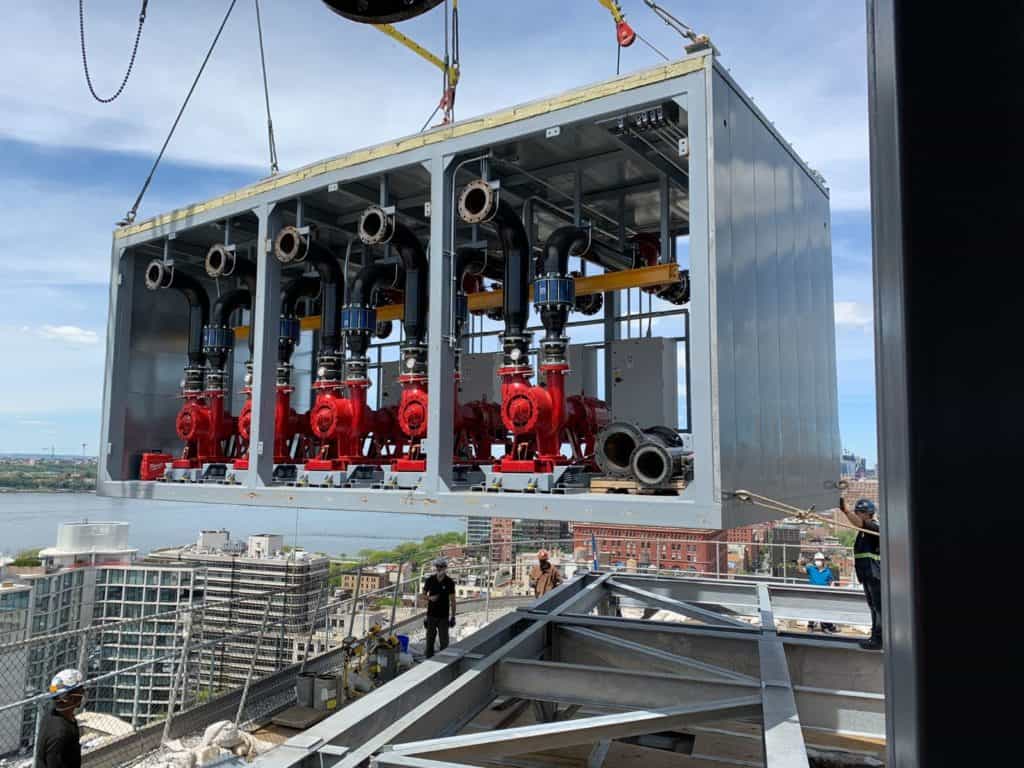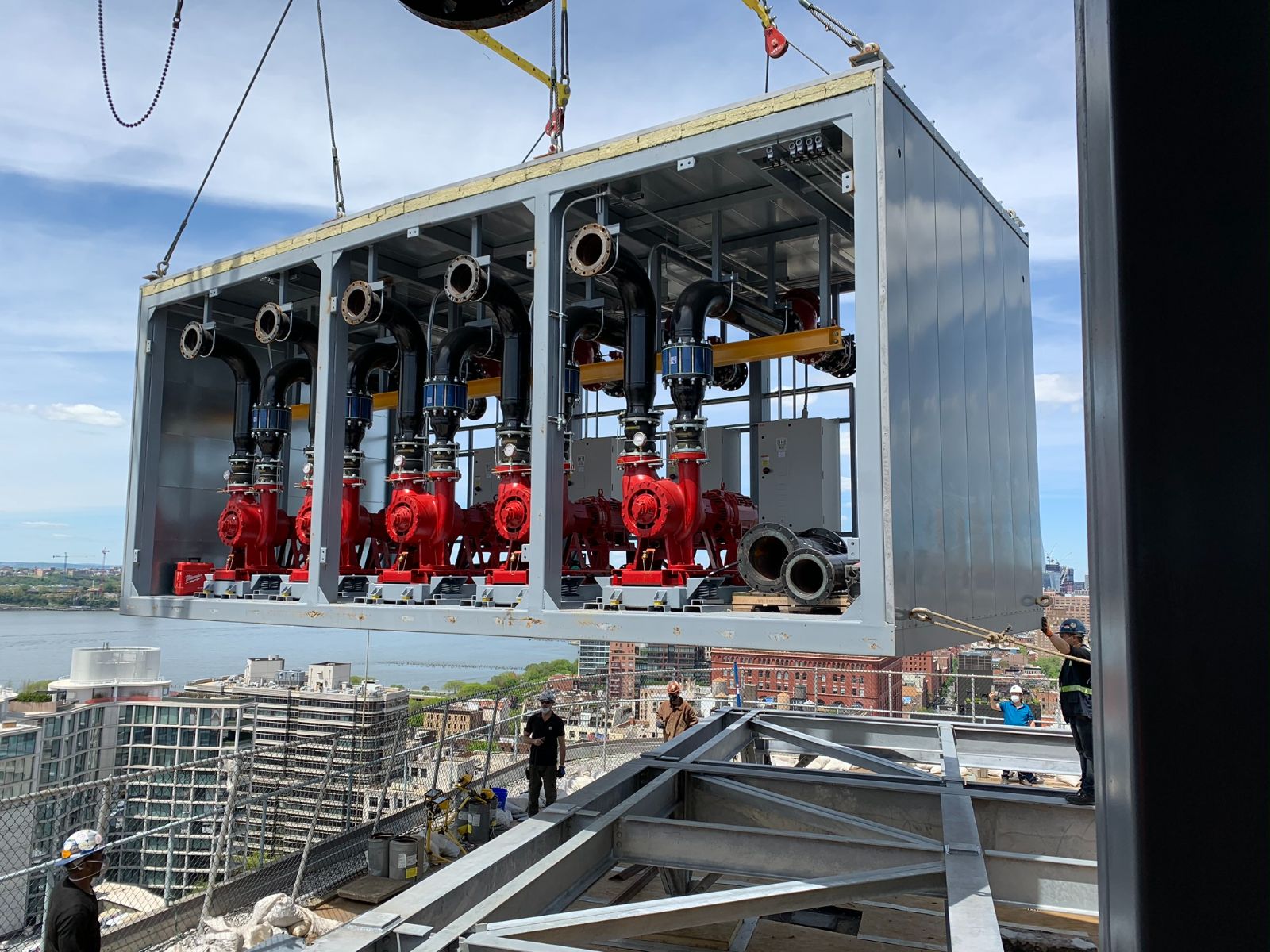 Most contractors, construction managers, and design teams recognize the inherent advantages that factory-built modular construction offers in terms of quality, schedule, and overall risk management. What many building owners are coming to realize are the benefits factory construction provides when upgrading systems in occupied buildings.
Most contractors, construction managers, and design teams recognize the inherent advantages that factory-built modular construction offers in terms of quality, schedule, and overall risk management. What many building owners are coming to realize are the benefits factory construction provides when upgrading systems in occupied buildings.
Critical central utility plant elements are often located on rooftops, where chillers and similar infrastructure can perform at their best while also being out of view. That ideal location becomes a problem when it’s time to upgrade or replace those critical systems.
With the traditional field-built approach, simply getting equipment to the rooftop and upper floors can be a challenge. Costly time is spent moving raw materials into place, and then the construction activities take even more time, adding to the overall project schedule, and impacting the budget. All of this has a negative impact on tenants, traffic, and building access as well. No matter how much effort is made, the noise from pipefitting, welding, grinding, etc., is impossible to fully mitigate.
Contrast those challenges to factory-constructed central utility plant components, which are lifted into place as completed units, ready to assemble and commission in a fraction of the time. Our customers tell us one of the underappreciated benefits realized from off-site construction is the limited impact on building tenants. Upgrades take place in the span of days or weeks, rather than months, while shut-downs of critical systems are minimized.
Of course, factory-constructed systems are not right for every application. However, rooftop plants and systems are increasingly seen as a more favorable solution for retrofits and upgrades. If you are considering a central utility plant upgrade, be sure to talk with the experts at Epsilon. We’ll give you our honest opinion, and if we don’t feel off-site construction is right for your project, we’ll let you know.



